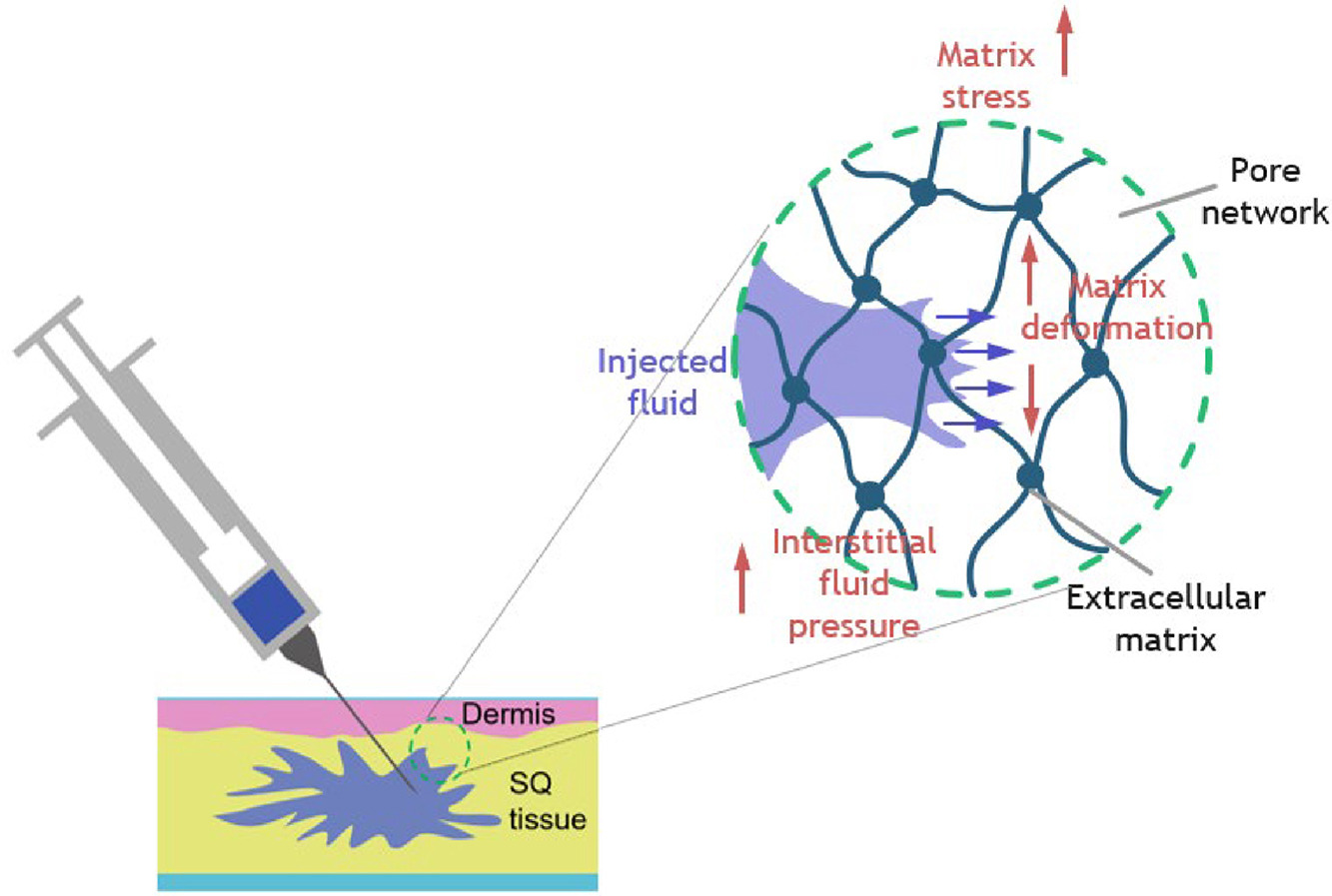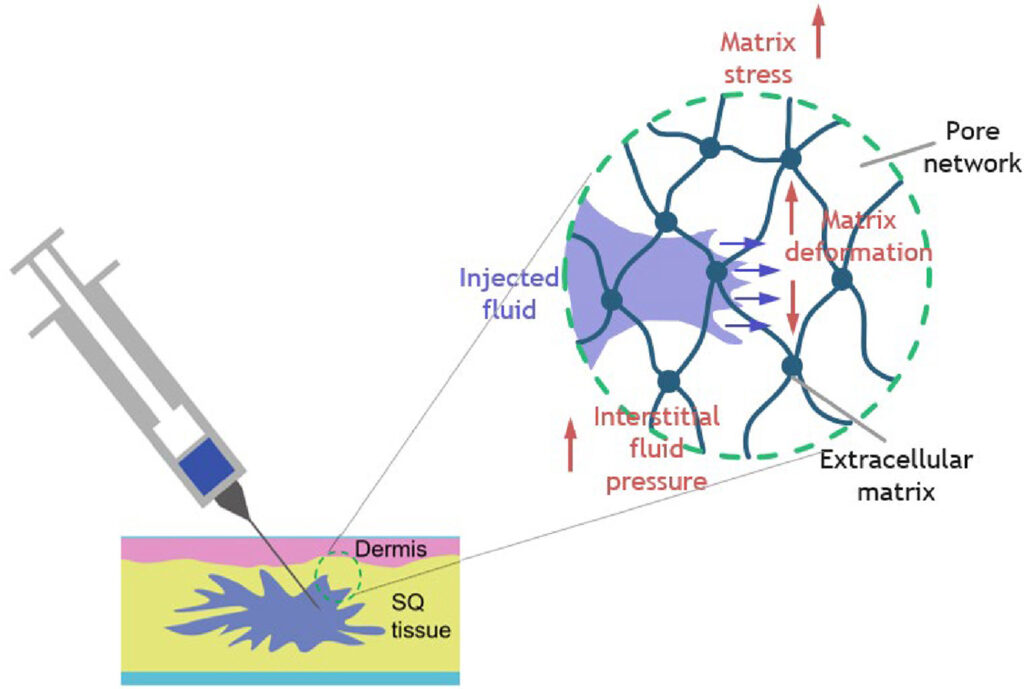Yingnan and Sameep’s paper to establish the mechanosensing mechanism of pain during injection of biologics is published in the Journal Extreme Mechanics Letters. In this paper, mechanical changes in the skin microenvironment are quantified in both experimentally and computationally, and correlated to potential pain signal.
Experimental and computational analysis of the injection-induced mechanical changes in the skin microenvironment during subcutaneous injection of biologics
Yingnan Shen, Sameep Rajubhai Shah, Kejie Zhao, Bumsoo Han
Abstract
Subcutaneous (SQ) injection is an effective delivery route for various biologics, including proteins, antibodies, and vaccines. However, pain and discomfort induced during SQ injection pose a notable challenge for the broader and routine use of biologics. Understanding the underlying mechanism and quantification of injection-induced pain and discomfort (IPD) are urgently needed. A crucial knowledge gap is what changes in the skin tissue microenvironment are induced by the SQ injection, which may ultimately cause the IPD. In this study, thus, a hypothesis is postulated that the injection of biologics solution through the skin tissue microenvironment induces spatiotemporal mechanical changes. Specifically, the injection leads to tissue swelling and subsequent increases in the interstitialfluid pressure (IFP) and matrix stress around the injection site, which ultimately causes the IPD. To test this hypothesis, an engineered SQ injection model is developed capable of measuring tissue swelling during SQ injection. The injection model consists of a skin equivalent with quantum dot-labeled fibroblasts, which enables the measurement of injection-induced spatiotemporal deformation. The IFP and matrix stress are further estimated by computational analysis approximating the skin equivalent as a nonlinear poroelastic material. The result confirms significant injection-induced tissue swelling and increases in IFP and matrix stress. The extent of deformation is correlated to the injection rate. The results also suggest that the size of biologics particulates significantly affects the pattern and extent of the deformation. The results are further discussed to propose a quantitative understanding of the injection-induced changes in the skin microenvironment.

